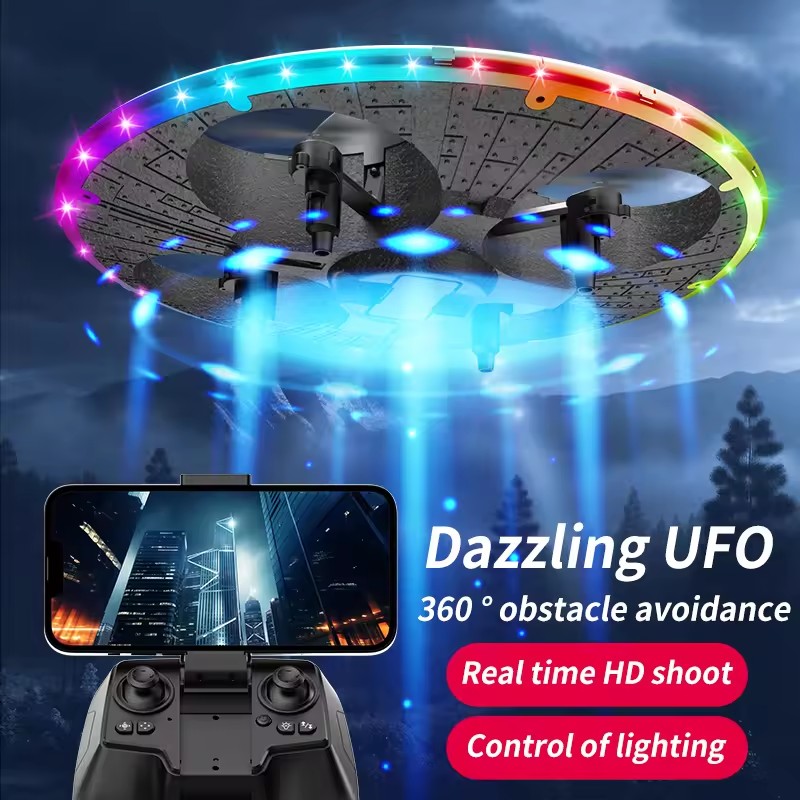Drones have transformed from sophisticated military equipment to accessible toys and tools for consumer use, soaring into popular culture with remarkable speed. No longer confined to the realm of specialists or expensive hobbyist gadgets, drone toys have become an increasingly visible presence in the commercial market, captivating the attention of children, teenagers, and adults alike. This rise in popularity has spurred innovation, giving way to a diverse array of drone types designed for different purposes, from simple child's play to advanced aerial photography. Here we explore the latest developments in the world of drone toys and what's driving their skyrocketing demand.
The allure of drone toys is multifaceted. At their core, they offer a sense of thrill and adventure, allowing users to explore the air in ways that were previously impossible without expensive equipment or extensive training. With the touch of a button, anyone can launch a small unmanned aircraft, navigating it through spaces both open and tight, scaling heights, and performing acrobatic maneuvers that were once the domain of professional pilots.


Technological advancements have been crucial to the proliferation of drone toys. Lightweight materials, efficient batteries, and sophisticated stabilization systems have made these devices more affordable, easier to control, and capable of longer flight times. In tandem with these hardware improvements, software developments such as autonomous flight modes, collision avoidance systems, and first-person view (FPV) cameras have expanded the possibilities for users, creating immersive experiences that blur the lines between remotely piloted vehicles and traditional gaming.
The application of drone technology extends well beyond mere recreation. As drone toys become more prevalent, they also serve educational purposes. Schools and youth organizations are incorporating drones into STEM programs to teach students about aerodynamics, engineering, and programming. Through hands-on learning experiences, young people gain valuable insights into the principles behind drone technology while developing problem-solving skills that are highly valued in the modern workforce.
The commercial potential for drone toys is vast and continues to expand. Consumer spending on these devices has shown significant growth, driven by new product releases from major manufacturers and a steady stream of startups looking to disrupt the market with innovative designs. Some companies have focused on making drones more durable and easier to repair, addressing one of the main concerns of parents and educators who worry about the safety and longevity of these devices when used by children.
Market researchers predict further growth in the drone toy sector, pointing to advancements in artificial intelligence (AI) and machine learning as key drivers for future development. Smart drones equipped with AI could soon offer enhanced autonomy, improved obstacle detection, and even personalized flight patterns that adapt to user preferences. Additionally, the integration of virtual reality (VR) and augmented reality (AR) technologies is set to provide a new dimension to the drone toy experience, where users can interact with virtual environments through their drones in real time.
However, the ascending trajectory of drone toys is not without its challenges. Privacy concerns and regulatory compliance have emerged as critical issues that must be addressed to ensure the responsible use of these devices. Drone toys, like all unmanned aerial vehicles (UAVs), are subject to regulations that vary by country and region, governing aspects such as flight altitudes, no-fly zones, and user certification requirements. Manufacturers and retailers are tasked with ensuring that consumers are aware of these rules and adhere to them, which can sometimes limit the marketing and sales strategies for drone toys.
In conclusion, drone toys represent a dynamic and rapidly evolving segment within the consumer goods market. With technological breakthroughs paving the way for more engaging and intelligent products, the future looks bright for those eager to fly. Nonetheless, as this industry takes off, stakeholders must work together to navigate the regulatory landscape and ensure that privacy and safety concerns are adequately addressed. By doing so, the sky will undoubtedly be the limit for the creative and exciting world of drone toys.
Post time: Jun-13-2024



